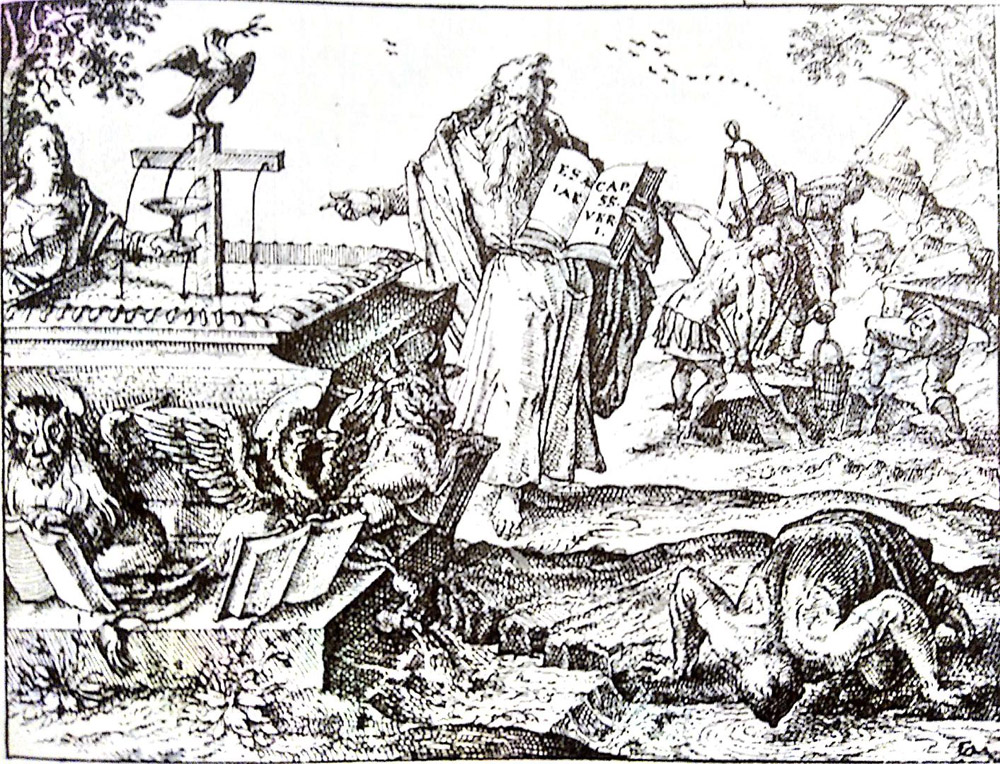Christoph Murer (1558-1614), "Fountain of Life"

Published 1622
Engraving
Isaiah holds the book of his prophecy open at chapter 55, verse 1, "All you that thirst, come to the waters." In the lower right corner one man answers that call.
But as for the rest of the engraving, the imagery derives less from Isaiah's invitation than from Jeremiah 2:13: "For my people have done two evils. They have forsaken me, the fountain of living water, and have digged to themselves cisterns, broken cisterns, that can hold no water." Referring to this verse, the artist puts men in the background digging fruitlessly for water with their backs turned to the fountain in the foreground, whose identity as "fountain of living water" is affirmed by the cross.
The cross signifies not only the wooden instrument of the crucifixion but Christ himself. From its five wounds flows the saving blood, collected in a chalice by a female figure who most likely represents the Church. Atop the cross, Noah's dove of peace has landed with the olive twig, a reminder of the Flood that prefigured Baptism (I Peter 3:21).
The water that the man drinks in the right foreground flows from under the base of the fountain. This appears to be a reference to Ezekiel 47:1-12, where "waters issued out from under the threshold of the house [of the Lord]" and kept gathering until they formed a great and fecund river. That reference has special meaning for the cross in the water of this fountain. For Jerome, the water from under the threshold signifies "bitterness, into which the sign of the Cross is placed and the bitterness changes to sweetness" (Glossa Ordinaria, IV, 1463).
Read more about Isaiah, Jeremiah, and Cross symbolism.
Source: Peters and West, eds. The Illustrated Bartsch (Abaris Books, 2011): XXI, 5.